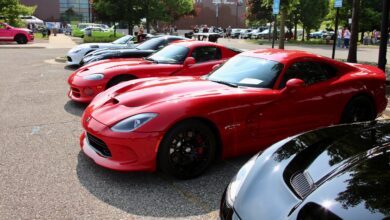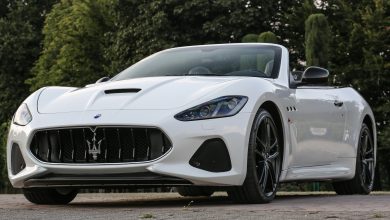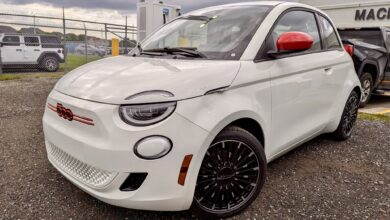SPOTTED: The New Maserati GranTurismo Modena In Detroit, Italy, & Germany!
New ICE Prototypes Spotted In A Trio Of New Photos / Video...
It’s been a busy week for Maserati engineers on both sides of the Atlantic. Spy photographers have caught the internal combustion engine (ICE) variants of the upcoming GranTurismo in Detroit, Italy, and Germany.
While there will be both an ICE and a battery-electric (BEV) option for the new 2+2 GT car, the GranTurismo will make its debut with the twin-turbocharged 3.0-liter “Nettuno” (Neptune) V6 under the hood, first.
The Nettuno uses both direct and port injection, twin-spark plugs, and combustion pre-chamber in addition to the regular chamber. The goal is to raise the power level and improve fuel efficiency. It delivers 621 horsepower at 7500rpm and 730 Nm (or 538 lb.-ft) of torque from 3000 rpm with a specific power output of 207 horsepower/liter in its MC20 configuration. We expect it to be the same in the GranTurismo and the upcoming GranCabrio (the convertible version of the GranTurismo).
In Detroit, Maserati engineers appear to be doing highway testing as this prototype was caught exiting the highway of one of the area’s busy freeways. Looking closely we can see hidden underneath is the Modena trim badge on the front fender.
In Italy, keen-eyed spy photographer Walter Vayr of GabetzSPYUnit (@GabetzSpyUnit), also caught a new GranTurismo Modena out on public roads. While the U.S. spy shots were taken near freeways, engineers are also testing the car in crowded traffic in urban areas of Europe as well. Telling us that Maserati engineers are getting the car fine-tuned for a number of driving situations, no matter the market.
In Germany, the GranTurismo has been spotted doing runs of the famous 14-mile Nürburgring Nordschleife. CarSpyMedia happened to catch the Nettuno-powered GT car rounding the ring and giving us a good sound clip of the twin-turbocharged V6 in action. You can see that video at the top of this article.
The overall appearance of the car appears to be a lot more sculpted than the outgoing model, as we can see certain body lines through the “Maserati” themed exterior wrap. We can also see some lines were added thanks to foam pieces in the lower part of the doors and right behind the front wheels.
We expect the new Maserati grand tourer to be unveiled by the end of this year, with the production of the ICE model coming soon after. The BEV offering should debut a short time later.


















No replies yet
Loading new replies...
Join the full discussion at the Mopar Insiders Forum →